In a world filled with conflicts and divisions, the quest for freedom is always an eternal human aspiration. We have associated a lot of imagery with symbols of freedom, such as the dove, the bald eagle of America, or the broken chains. These symbols all have deeper meaning and even stories behind them.
In this article, we will explore 25 popular symbols of freedom around the world, uncovering their fascinating meaning in societies and cultures throughout history.
- 1. Bald Eagle
- 2. Open Hand
- 3. Standing In Front Of The Wilderness
- 4. Flags
- 5. Horses
- 6. Dove
- 7. Statue Of Liberty
- 8. Torch
- 9. Broken Chains
- 10. Liberty Bell
- 11. Declaration of Independence
- 12. Mandela Prison Number (46664)
- 13. Key
- 14. Rising Sun
- 15. Open Road
- 16. Birds Flying Away
- 17. Fists Raised In Solidarity
- 18. Expanding Mind
- 19. Blue Sky
- 20. Dandelion seeds blowing in the wind
- 21. Wings
- 22. Open Book
- 23. Rainbow Flag
- 24. Dharma Wheel
- 25. Phoenix
- Conclusion
- Related Posts
1. Bald Eagle
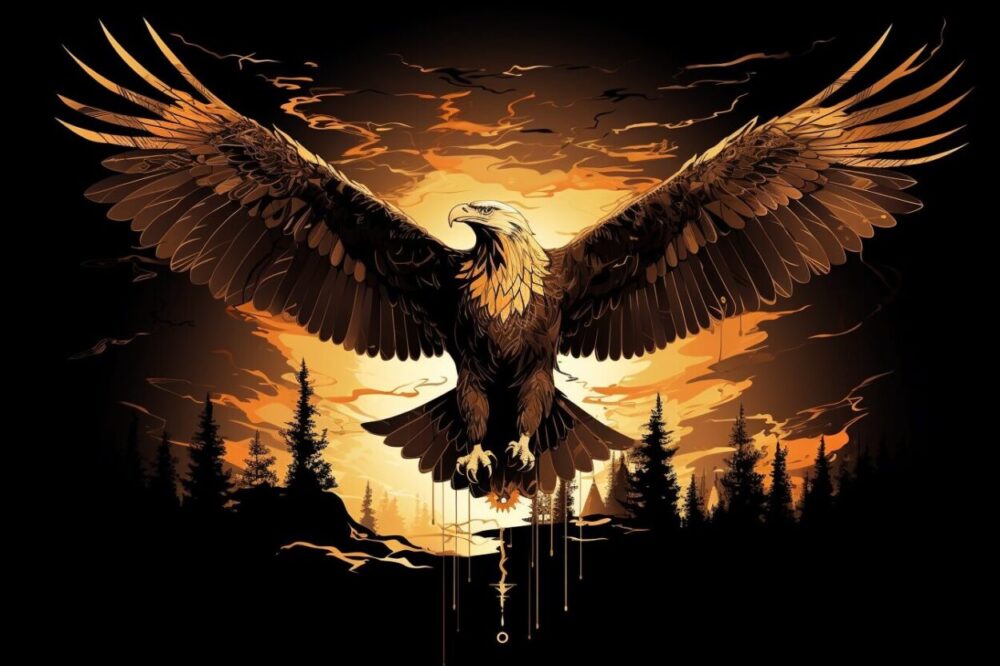
Throughout history, the eagle has been a powerful symbol for great empires like Babylon, Egypt, and Rome, appearing on their emblems. Its majestic flight and sharp vision evoke strength and awe. In Native American culture, the eagle is considered sacred, believed to fly closest to “the Creator,” symbolizing freedom, power, leadership, and foresight due to its ability to spot prey from great distances. Notably, the bald eagle is native to North America.
In early Christianity, the eagle represented salvation, hope, and resilience, while in Islam, it is seen as a flawless creation of Allah, symbolizing dignity, authority, and noble ferocity. The eagle also appears on Mexico City’s emblem, perched on a cactus and devouring a serpent, an image rooted in ancient Aztec legend.
In the United States, the bald eagle became the national emblem in 1782, symbolizing strength, courage, and freedom. However, Benjamin Franklin disapproved of the choice, claiming the bald eagle had bad moral character and suggesting the turkey as a more fitting symbol. Despite Franklin’s critique, Congress chose the eagle, as it better embodied the values of the new nation.
2. Open Hand
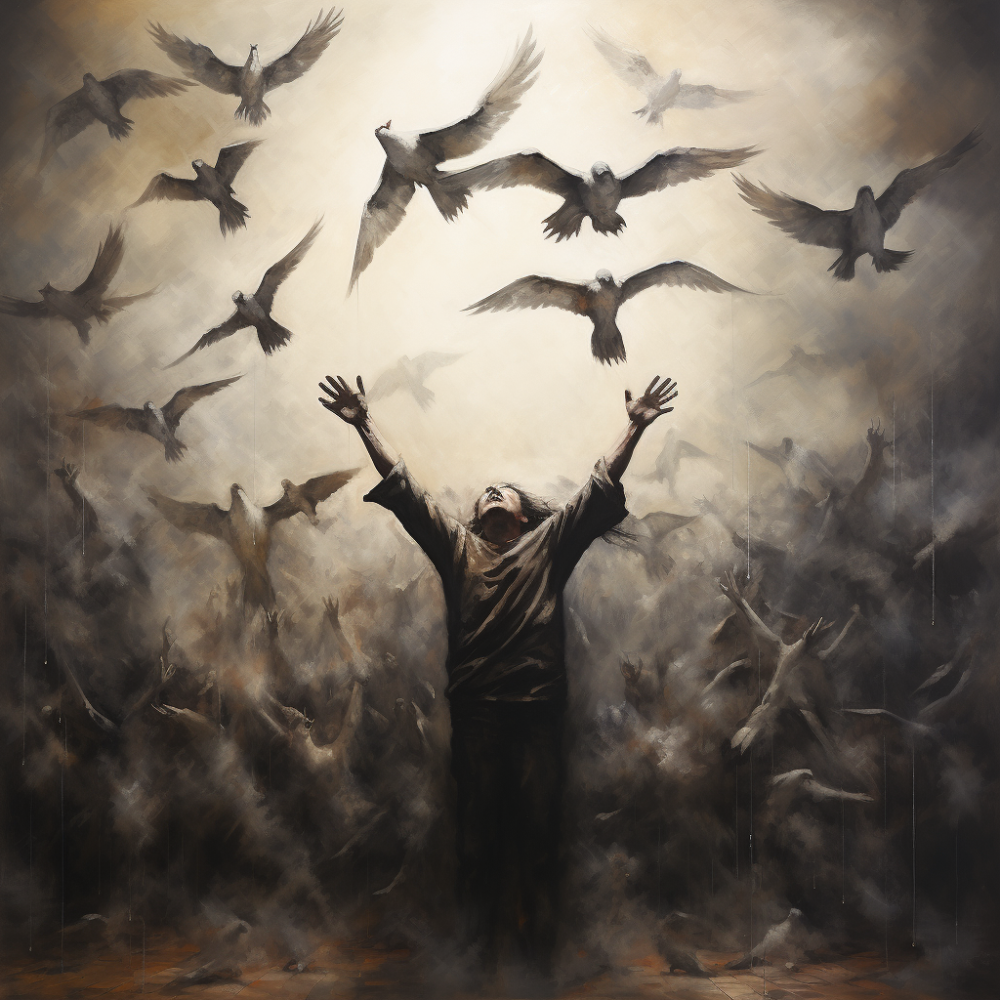
Open hands symbolize freedom, openness, and a welcoming attitude. They show a willingness to receive and embrace life without resistance or control. Open hands are free from tension—they don’t cling to the past or push away opportunities. Instead, they are ready to hold, appreciate, and cherish what life offers.
This gesture reflects liberation from fears, insecurities, and past rejections. By keeping our hands open, we allow ourselves to connect, love, and experience life fully. It’s a symbol of choosing freedom—being open to change, new experiences, and the people around us without fear of loss or rejection.
3. Standing In Front Of The Wilderness

Standing in front of the wilderness, we experience not just freedom, but also a profound sense of awe—an overwhelming feeling that brought forth our admiration for the natural world. Gazing at the stars or connecting with the magical forest is truly a humbling and prehistoric experience. We are utterly insignificant in comparison with the greatness of the nature and the universe infinitely stretching out in all directions. It is liberating.
4. Flags
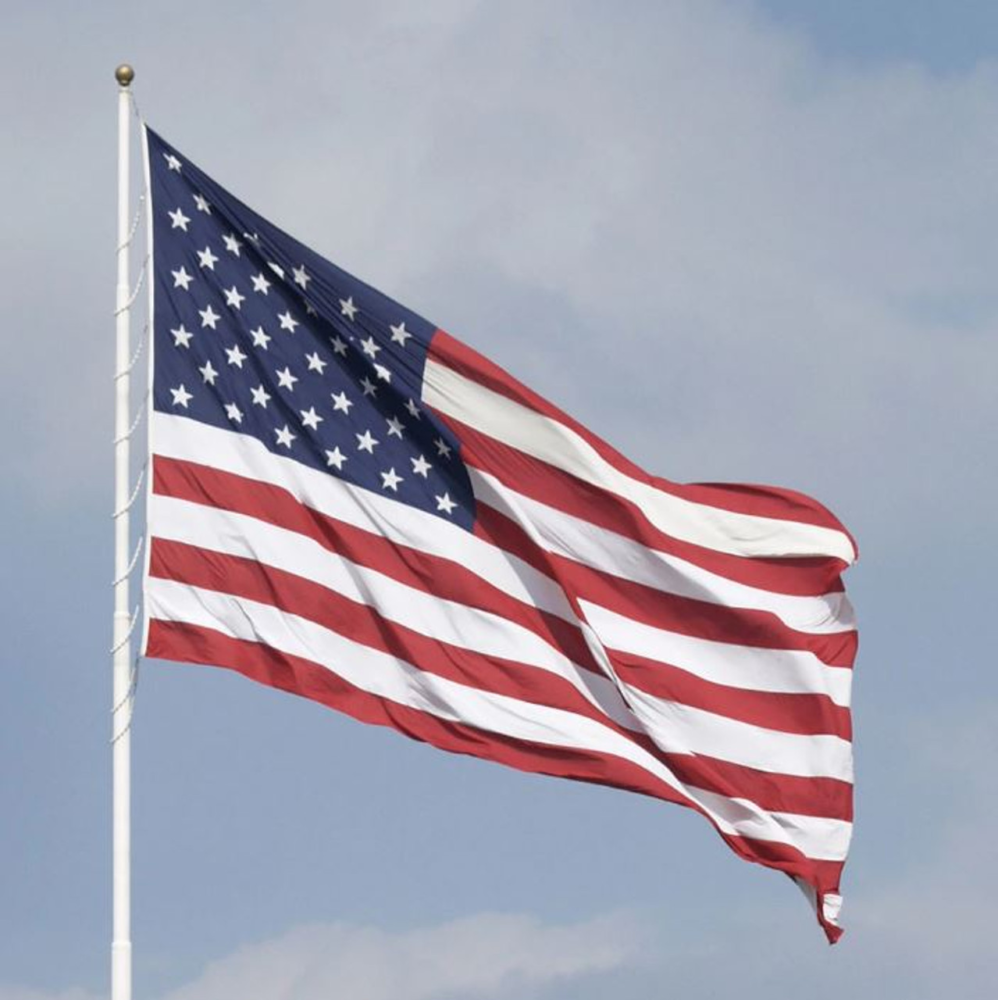
Flags are more than just decorative emblems—they convey core principles and aspirations:
- American Flag: The stars represent the states, and the stripes symbolize the original thirteen colonies, reflecting liberty, unity, and independence.
- South African Flag: During the anti-apartheid struggle, the flag became a powerful symbol of resistance and the fight for equality.
These flags, and others used by independence movements, represent the unwavering desire for freedom and justice.
During revolutions or wars, flags carry deep emotional meaning:
- Sign of Resilience: A flag in battle symbolizes unbreakable determination and the refusal to surrender.
- Symbols of Purpose: To those fighting for freedom, the flag represents their mission to secure rights and protect loved ones.
- Inspiration for Bravery: As long as the flag flies, it reminds people to keep fighting, no matter the challenges they face.
5. Horses
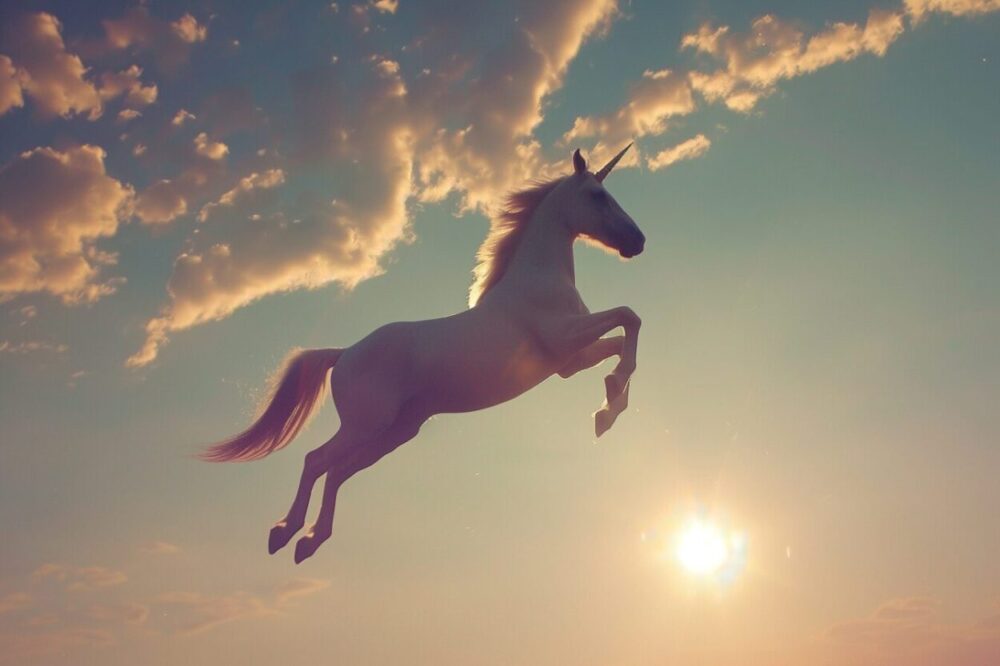
Horses have long been associated with freedom unmatched strength and sense of independence. They have a natural grace that allows them to roam and run freely across great distances. The mere sight of a horse galloping across an open field is so powerful. These creatures are uninhibited but they can display amazingly controlled manner if they are accompanied with a good rider. Together the horse and the rider form an intimidating force on the battlefield, fearlessly charging into danger.
6. Dove
Throughout history, birds soaring through the sky have always symbolized the idea of freedom, and doves are a prime example. They possess the remarkable capacity to glide through the air with ease, giving them the freedom to move in any direction they desire. This represents the ultimate symbol of emancipation and self-sufficiency, surpassing the limits imposed by its environment.
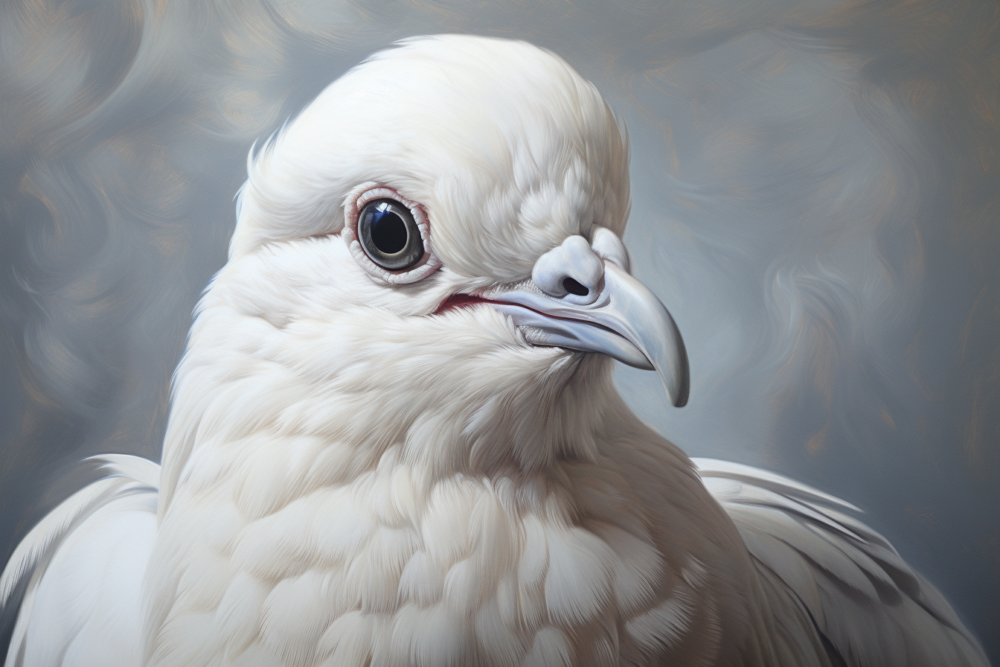
Read more: Dove Symbolism & Meaning: Ultimate Guide
7. Statue Of Liberty

The Statue of Liberty is situated in Upper New York Bay, widely recognized as a symbol of freedom. It was originally intended to symbolize the friendship between France and the U.S. and their shared yearning for liberty. The statue also commemorated the end of slavery after the U.S. Civil War. Throughout time, the Statue has acquired greater significance. It is known as the Mother of Exiles, welcoming countless immigrants and embodying hope and opportunity for those pursuing a better life in America. It ignites the aspiration for freedom in people worldwide and symbolizes the United States itself – the land of freedom
8. Torch
During the Enlightenment era in the 18th century, the torch imagery was quite prevalent in philosophical and literary works. Great thinkers like Voltaire, Jean-Jacques Rousseau, and Immanuel Kant advocated for intellectual freedom and the power of reason, and it was a time when scientific thinking truly blossoms, paving the way for great discoveries and advancements in the next centuries. They saw the torch as a symbol of illuminating the darkness of ignorance and superstition, emphasizing the liberation that comes from critical thinking and the freedom to question authority.
Lady Liberty herself also holds a torch in her raised hand, symbolizing enlightenment and freedom. It represents the power of knowledge, the quest for justice, and the inherent human right to think, express, and strive for a better world. The brightly burning torch’s flame symbolizes the ongoing struggle for freedom and the constant need to guard against the forces that seek to extinguish it.
9. Broken Chains

Chains represent slavery and oppression. They are extremely heavy, restricting people’s movement and living their life normally. Prisoners and people in capture are bound by chains, and usually this restriction was imposed on them by a stronger force. Broken chains therefore symbolize the destruction of these limitations and attainment of liberty.
In the Industrial Age, labor workers is often depicted as physically and psychologically oppressed by capitalists who went to great lengths to exploit them. Together they must break the chains, signifying the victory of human spirit and the longing for liberty. You should find the broken chain symbol in many old propaganda imagery of the working class fighting for their rights.
Interestingly, the broken chain symbol also appeared in the Statue of Liberty. Bartholdi – the sculptor of the statue – added the shackles to represent newly achieved freedom of America. He initially intended to put the chains in the Statue’s left hand, but that spot was used for her tablet instead. Bartholdi decided to place the chains and shackles at Lady Liberty’s feet, symbolizing her liberation from bondage.
10. Liberty Bell
The Liberty Bell, inscribed with the message “Proclaim Liberty Throughout All the Land Unto All the Inhabitants thereof,” is a powerful symbol for freedom. This inscription inspired abolitionists, suffragettes, and Civil Rights leaders. On July 8, 1776, the Liberty Bell rang from Independence Hall, calling the people of Philadelphia to witness the first public reading of the Declaration of Independence by Colonel John Nixon. Over time, it became an American symbol of liberty. Unfortunately, in 1751, the bell cracked and was recast locally, and attempts to repair it were unsuccessful, resulting in a second crack that silenced the bell permanently.

11. Declaration of Independence

when Ho Chi Minh read the Declaration of Independence
Here it is not just the Declaration of Independence of the United States of America, but of any country around the world that has overcome great oppression to regain freedom and sovereignty over their land.
The Declaration was created to justify the independence of the early American republic from its British rule. However, its core principles of unalienable rights, equality, and liberty have transcended time and borders. It has served as a blueprint for approximately 193 other nations, including Haiti in 1804, New Zealand in 1835, Vietnam in 1945, Israel in 1948, and more recently, Kosovo in 2008.
12. Mandela Prison Number (46664)

Nelson Mandela is a global symbol of equality, resilience, and justice. As a leader of the African National Congress, he fought apartheid, demanding equal rights for Black South Africans.
During his 27 years in prison on Robben Island, he became known as Prisoner 46664, the number symbolizing his resistance. After his release in 1990, Mandela was elected South Africa’s first Black president in 1994.
In 2003, Mandela launched the 46664 Campaign to raise awareness about HIV/AIDS in South Africa, using his prison number to unite people in the fight against the epidemic.
Mandela’s life and leadership inspired worldwide movements for human rights, social justice, and forgiveness, making him a lasting symbol of freedom and hope.
13. Key
A key, especially a skeleton or master key, symbolizes freedom and endless possibilities. In ancient times, cities gave special keys to important guests, granting them unrestricted access. This tradition continues today, with ceremonial keys honoring important figures.
Keys also represent breaking free from limitations. Whether unlocking doors or removing restraints, a key is a universal symbol of liberation and the ability to explore new opportunities.
14. Rising Sun

The rising sun signals the start of a brand new day, when we rise and embrace a new opportunity to create and explore the world. It is a metaphor for liberation from the past, leaving behind old constraints or limitations and embrace freedom. There is a sense of hope and optimism in the rising sun, promising a brighter future ahead.
Read More: Sun Symbolism Across Cultures
15. Open Road
In front of you is the wide open road, leading to your destination, and although you have no idea what the future holds, you still see that it will bring you to a brave new life, where you embrace freedom and boundless possibilities. It represents a departure from the constraints of daily life to embark on the journey of self-discovery and adventure. On the open road, we find peace in the promise of the unknown.

In the final scene of “El Camino,” the character Jesse Pinkman, portrayed by Aaron Paul, drives along a vast road towards Alaska. The open road becomes a visual manifestation of Jesse’s newfound freedom, allowing him to escape the horrors of his past as a criminal. Jesse symbolically left behind his troubled history and embraces a new life where he can live quietly in peace, simply doing what he loves.
16. Birds Flying Away
Birds effortlessly flying through the air, no restrictions, nothing holding them back, represent true liberation and limitless potential. They are among the few creatures that can travel so freely across the world, unrestricted by earthly boundaries. Looking at a caged bird flying away to the wide wide sky gives us all a serene feeling of liberation.
During the winter, despite storms and strong winds, birds still manage to fly great distance to warmer areas for comfort and food. It is an interesting metaphor for humanity’s pursuit of a better world, rising above life’s difficulties and find solace in a promising future.
Read More: Wind Symbolism and Meaning Around The World
There is an old song from the 1940s called “Donna Donna” telling the story of a calf destined for slaughter. On its way to the slaughterhouse, it saw a swallow flying above so proud and free. The flight of the swallow symbolizes hope and the dream of escaping the confinement that is the calf’s fate.
How the winds are laughing
They laugh with all their might
Laugh and laugh the whole day through
And half the summer’s night.
Dona, dona, dona…
“Stop complaining,” said the farmer,
“Who told you a calf to be?
Why don’t you have wings to fly away
Like the swallow so proud and free?”
Calves are easily bound and slaughtered
Never knowing the reason why.
But whoever treasures freedom,
Like the swallow has learned to fly
17. Fists Raised In Solidarity
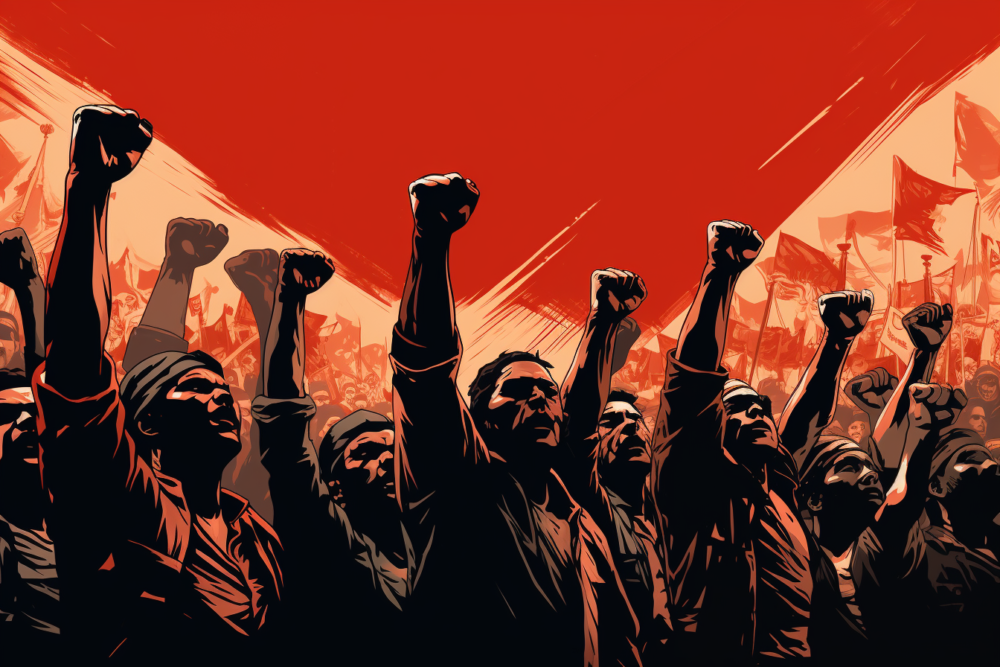
The raised fist symbolizes unity, strength, and resistance against oppression. Its roots date back to workers’ movements, where people raised their fists during protests to show solidarity and demand justice.
Used by various revolutionary movements, the raised fist represents collective action and defiance against injustice. It became a powerful symbol during labor movements, as workers fought for fair wages, better conditions, and basic rights.
Today, the raised fist continues to stand for unity and resilience, reminding us of the ongoing fight for freedom, equality, and social justice worldwide.
18. Expanding Mind
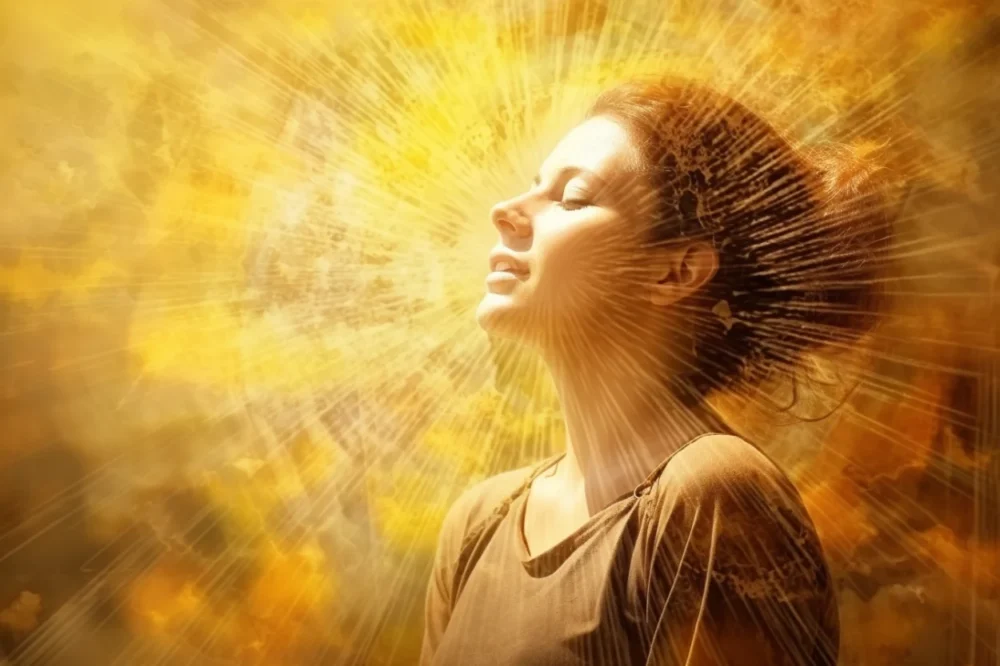
An expanding mind symbolizes freedom of thought and limitless potential. It represents the thrill of discovery—the feeling of unlocking new ideas and seeing the world from fresh perspectives.
Moments of revelation or breakthroughs feel like mental doors opening, leading us to explore beyond conventional thinking. The pursuit of knowledge allows us to grow, uncover hidden truths, and embrace alternative viewpoints.
On this journey, we break free from old patterns, expanding our understanding of the world and ourselves. Each new idea is a step toward greater freedom, creativity, and personal growth—a reward that continues to inspire and transform us.
19. Blue Sky
Blue symbolizes freedom through its connection to the sky and sea—both vast, open, and endless. These images often evoke a sense of exploration, possibility, and the desire to go beyond familiar boundaries.
The sky represents hopes and ambitions, reminding us that our goals may take time to achieve, but they can lift us to great heights. Its vastness symbolizes the freedom to dream and imagine without limits.
The serene blue sky inspires us to break free from restrictions and think beyond societal or personal boundaries. It encourages us to chase our aspirations and reach new heights, knowing that our potential is as boundless as the open sky.
20. Dandelion seeds blowing in the wind

Dandelions spread their seeds through the wind in a simple and fascinating way. When a dandelion flower matures, it transforms into a fluffy white ball called a puffball or seed head. Inside the puffball are lots of tiny seeds, each attached to a feathery structure called a “pappus.” When the puffball is ready, it releases these seeds into the air.
it is a beautiful image of freedom. The dandelion grows up, then spreads its seeds to lands far away, continuing its species simply by going with the flow of the wind. The dandelion’s floating seeds represent the potential for new journeys. We can all embrace the freedom to let go of limitations, fears, and past attachments, and allow ourselves to be carried away by the currents of life.
21. Wings
Wings symbolize freedom and the desire to rise above limits. They represent escape, possibility, and the ability to explore beyond boundaries.
Flying signifies breaking free from physical, mental, or societal constraints. In many cultures, wings also represent spiritual freedom. Angels, with their wings, symbolize the soul’s ability to transcend and connect with higher truths.
In stories and myths, winged figures often stand for hope and the courage to seek a better life. From Icarus to modern heroes, wings remind us of the human longing for freedom and limitless potential.
Read more: Feather Symbolism & Meaning: Ultimate Guide
22. Open Book

An open book symbolizes freedom of thought and creativity in a simple and powerful way. When a book is open, its pages reveal a world of ideas and stories waiting to be explored. Have you ever gotten so lost and immersed in a story that you forgot about your surroundings? A book is capable of taking us to imaginative worlds that is impossible in reality. It allows us to live through thousands of lives. Book is the freedom to delve into different perspectives, to imagine new possibilities, and to think independently.
An open book also symbolizes the freedom to express ourselves. The author had the freedom to pour their thoughts and ideas onto the pages. Writing a book, no matter the genre, is a fascinating experience of self-discovery. Readers also have the freedom to interpret, analyze, and respond to the content in the book in their own unique ways. Books is a great channel to express our individuality and to contribute to the creativity of our world.
23. Rainbow Flag

The rainbow flag is a truly iconic symbol that represents the freedom to express one’s sexuality within the LGBT community. This flag was designed by Gilbert Baker in 1978, consisting of six colorful stripes that span the spectrum of colors, creating a beautiful and inclusive symbol of unity and diversity.
Each color of the rainbow flag holds its own significance. Red represents life, orange represents healing, yellow represents sunlight, green represents nature, blue represents harmony, and purple represents spirit. Together, these colors form a powerful symbol of acceptance, love, and the freedom to be true to oneself.
24. Dharma Wheel
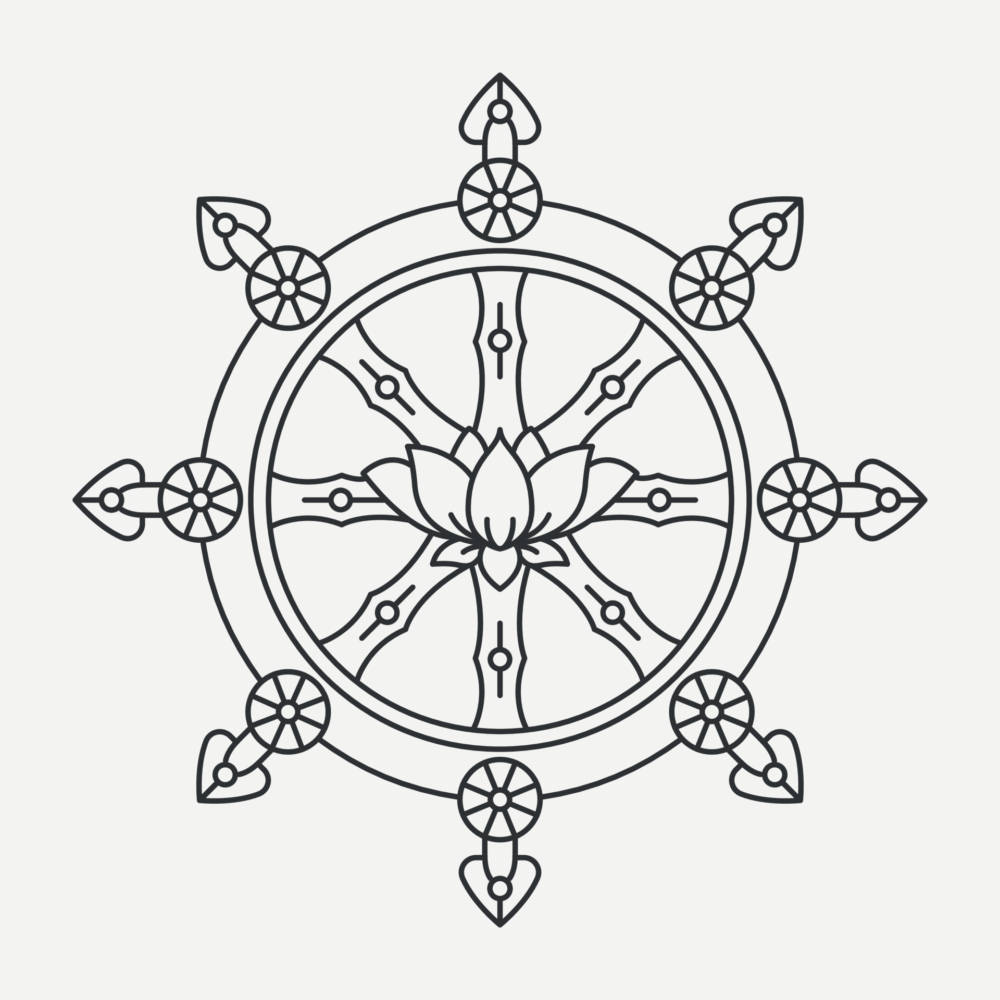
The Dharma Wheel is a key Buddhist symbol representing the Buddha’s teachings and the path to enlightenment. It symbolizes core concepts like the Four Noble Truths, the Noble Eightfold Path, and freedom from the cycle of rebirth.
Originating from ancient Indian traditions, the Dharma Wheel dates back to King Ashoka’s time and represents the idea of a “universal monarch.” In Buddhism, it signifies the Buddha’s first sermon, where he set the “wheel of Dharma” in motion, marking a shift in human understanding.
The phrase “turning the wheel of Dharma” refers to spreading the Buddha’s wisdom and truth. The wheel also symbolizes Dharma itself—the cosmic law, moral order, and the guiding principles of Buddhist teachings.
25. Phoenix

There’s a story about the phoenix, a special and amazing bird that lives alone. It lives for an incredible 500 years, then builds a nest and sets itself on fire. From the ashes, a new phoenix rises, strong and refreshed, bringing hope and new beginnings.
The phoenix is a mythical creature, but historians believe it was inspired by real birds like the eagle, hawk, crane, flamingo, and peacock. Some think that the phoenix myth came from the flamingo, which nests in hot salt flats. The water’s reflection makes their nests look like they’re on fire. In Chinese folklore, the peacock, with its similar size and beautiful feathers, is also connected to the phoenix.
Another bird similar in size to the phoenix is the majestic eagle, although their colors are different. Some eagles have feathers that are blue and purple, like the phoenix. The phoenix symbolism is more than just life and death; it symbolizes change and the ability to overcome challenges and start anew.
Read more: 30 Symbols Of Death Around The World
Conclusion
In conclusion, symbols of freedom are prevalent in cultures around the world, representing our endless struggle against oppressive and authoritarian governments and our innate desire to reach our wild dreams. From the broken chains to the imagery of the blue sky, each symbol carries its own unique significance and interpretation. They all carry the idea that freedom
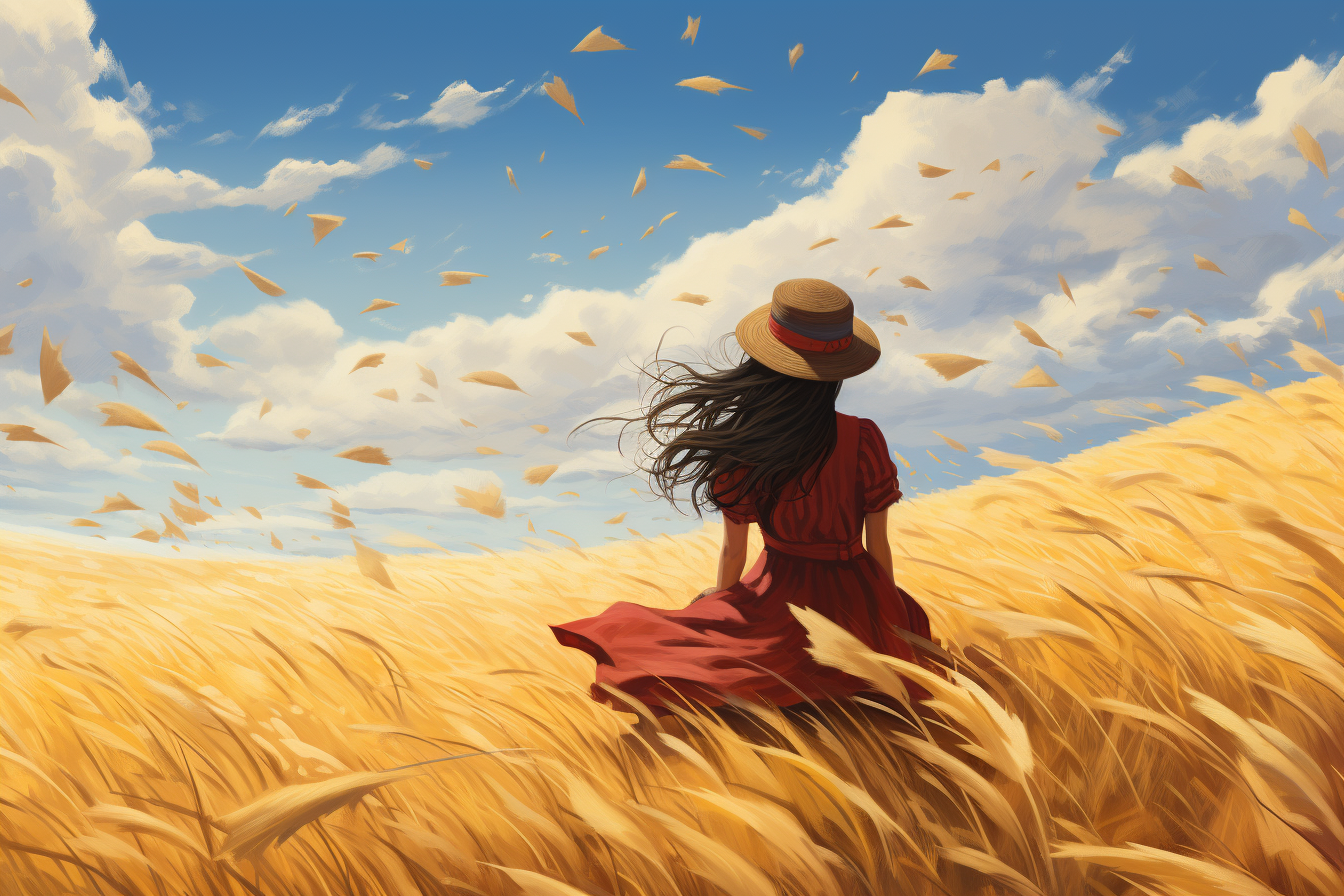






Comments are closed